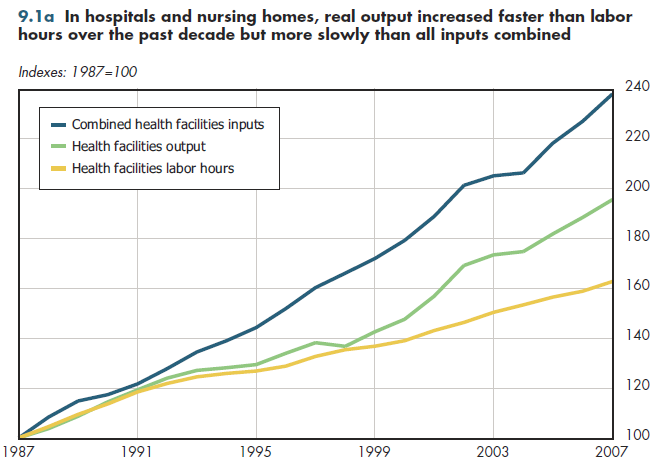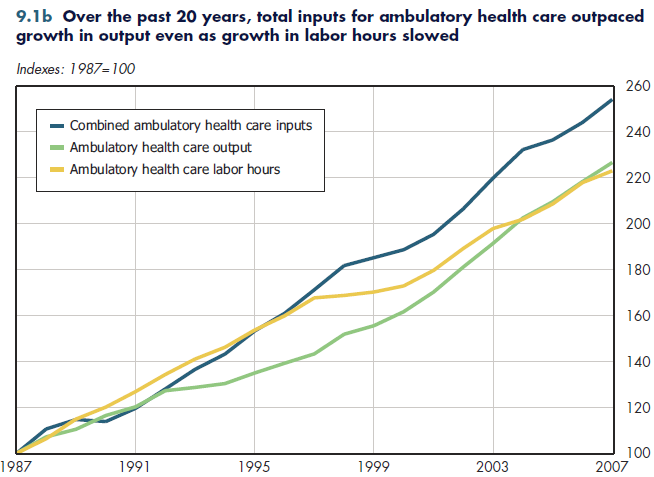In 2007, the output of real health services in American health facilities was approximately double its level 20 years earlier. What was behind this production increase? To what extent did it reflect the use of more factors of production or inputs—the number of persons employed and the amount of capital they had to work with—and to what extent did it reflect greater efficiency in the use of inputs, that is, increased productivity? Measuring productivity growth is important because if productivity declines, the nation will require ever-increasing amounts of labor and capital to produce the same level of health output. This either will slow down or might even reverse the rise in general living standards.
The basic facts about the growth of output and input are compiled by the Bureau of Labor Statistics (BLS). Unfortunately, these facts are limited both in scope — covering only health services — and time — going back to only 1987. Typically, the growth of output is compared with the growth of labor input, which is measured in simplest terms by changes in employment and annual hours worked. Labor hours for health facilities rose just over 60 percent during these 20 years, approximately 2.5 percent annually (figure 9.1a). Output grew 3.4 percent a year. These numbers suggest a rise in labor productivity of 0.9 percent annually (3.4 minus 2.5).

However, this particular measure ignores other important factors that contribute to production, including the physical facilities themselves, equipment, inventories, and land. With these taken into account, combined inputs for health facilities rose 140 percent during these 20 years, approximately 4.4 percent annually. This growth implies a decline in productivity more broadly measured.
A similar result, though less extreme, occurred in the ambulatory health services industry. Over the entire period since 1987, output rose at almost the identical rate as labor input, although declining labor productivity occurred during the entire 1990s (figure 9.1b). Output grew somewhat faster than among health facilities, but combined inputs grew faster still, again implying declining productivity.

Download PowerPoint versions of both figures.
Download Excel tables used to create both figures:
Figures 9.1a/9.1b Tables.
Figures 9.1a and 9.1b both were created from the following table (the workbook includes all supporting tables used to create this table):
- Table 9.1. Total Output, Labor Hours, and Combined Inputs for Health Sector, 1987-2009
- Author's calculations.
- Department of Commerce. Bureau of Economic Analysis.
- Department of Labor. Bureau of Labor Statistics.











